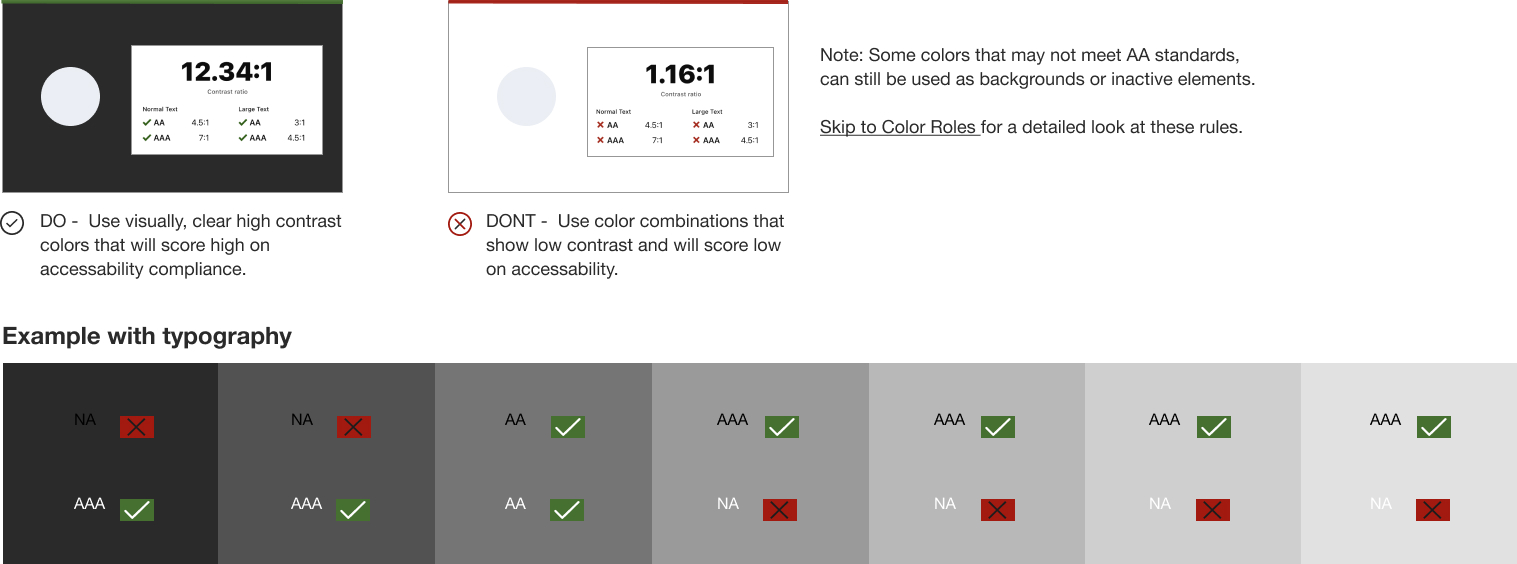Color Usage
Color palettes should be scalable and customizable – especially if working with multiple brands/teams. In this case, I’ll be showing you a brand agnostic design system that was built to be used by various brands within an organization. Naming structure for colors starts with the brand name followed by the color name.
Below is a breakdown of color principles, roles, and accessibility, All of which serve as a guide for color usage.

“A design system is a living, complete set of standards intended to manage design at scaleusing reusable components and patterns.”
– NNG





